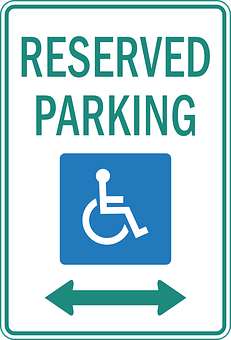A Writer’s Guide to Writing and Working with People with Disabilities
NOV 11, 2018
One out of every five Americans is currently living with some form of a disability.
This means that the chances are high that you know, work with, or even teach a disabled person.
Perhaps you’re writing about a person with a disability, maybe you’re tutoring a disabled student, or maybe you’re interested in hiring a person with a disability.
You want to make sure that you’ve done your part to make the environment as safe and accessible as is possible.
But if you’re new to working with people with disabilities, it can be tough to know where and how to start.
Keep on reading this post to find out how to empower, not pity, people who are disabled.
1. Know the Correct Terminology
We’ve all said things we regret, and especially in today’s world, it’s easy to say something offensive without even realizing it.
So, the first step in respectfully working with people with disabilities is to make sure you’re up-to-date on the most correct terminology. For example, some people find the term “disabled” to be offensive, preferring terms like “differently abled” instead. Others are far less bothered by it.
The best way to know which term to use is to ask the person which one they prefer.
Don’t beat yourself up if you don’t get things perfect the first time around. But, show that you’re making a serious effort to learn which words are appropriate.
Learning disability language is a wonderful way to show that you’re committed to creating a respectful environment for everyone.
Additionally, if you’re writing about disability issues in a novel or journalism piece, we suggest that you have someone with a disability look over it before you publish it. First of all, this could save you from serious embarrassment if you used the wrong term in ignorance.
But it will also improve the characters or storyline that you’re trying to create by making it seem much more authentic. If you’re an able-bodied person, you’ll likely discover there are things you never even knew were a concern to those with disabilities.
Asking for advice, input, and opinions will only strengthen your work.
2. Focus on Accessibility
There are few things more frustrating to a disabled person than not being able to enter a building, hear or understand what’s being said, or participate at the same level as everyone else because of accessibility issues.
It’s your job to ensure you’ve created a physically and pedagogically accessible environment for everyone. Find out more about the type of mobility scooter or wheelchair your student or colleague has and look for a meeting place or classroom environment you’re certain they can get to.
You’ll also need to think about how your teaching or speaking style will need to adjust.
For example, if you’re teaching a class of disabled writers, make sure that you have the correct technology on hand to keep everyone on the same page.
You may have some students that need assistance with the physical act of writing, while others may need an auditory aide or caregiver in the room to help them with hearing difficulties.
Of course, there’s a good chance that not everyone in the room will have the same disability or need the same level of help.
Before working with people with disabilities, we suggest that you create an accessibility worksheet that they can complete before a class or meeting begins.
This allows them to tell you exactly what they need, instead of you having to guess or providing inadequate assistance. Plus, you’ll also know what to expect, so that, if needed, you can adjust your teaching or meeting topics and methods accordingly.
3. When in Doubt, Just Ask
The truth is that no one is an authority on someone else’s disability. The best way to find out what the disabled person needs, and if their needs are currently being met, is to just ask them.
Of course, you want to ensure that your questions are appropriate and relevant to the topic at hand. For example, if a student or colleague needs you to wear an auditory listening device so they can hear you, it’s fine to ask them how it works and if the settings are adjusted correctly.
It’s less appropriate to ask if you can try on their hearing aids to “see what it’s like” or ask them questions about the extent of their hearing loss.
As your relationship grows over time, you may find that the person will bring these things up on their own. However, whether they decide to or not is entirely up to them.
It’s also important to stop adopting an attitude of pity towards disabled people. Chances are, they like and dislike the same things you do, have the same wants and needs as you, and, at the end of the day, are just like everyone else.
You don’t need to constantly talk about how “brave” or “inspiring” they are. Instead, treat them as you would anyone else.
Working with People with Disabilities: Wrapping Up
We hope that this post has helped you to better understand the best ways of working with people with disabilities.
Remember to keep communication open and allow them to ask for what they need. Study up on disability language and terminology, and don’t be afraid to ask for a clarification if need be.
Above all, treat them as you would want to be treated – with respect and kindness.
Looking for more advice about accessibility? Want to understand what constitutes workplace discrimination or classroom bullying? Want to create an environment where everyone





